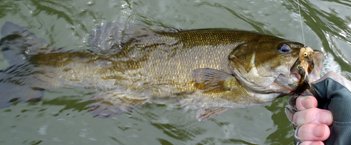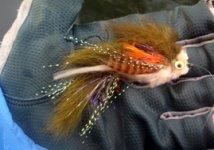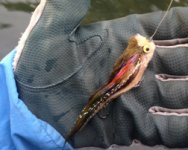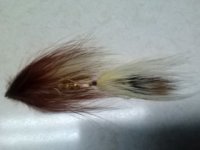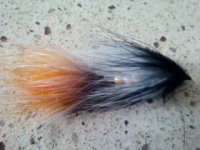Night_Stalker
Member
- Joined
- Feb 12, 2013
- Messages
- 724
I've been relearning tying and catching up on the new materials developed in the past 35 years.
As a teen I would design some crazy bugs and streamers with non-conventional materials. I have been using some of my old flies and making new. I have purchased a lot also.
I took out an articulated streamer that I made the other evening and tossed it on a sink tip. All was great until my streamer express 50 ft line wrapped around something in an 8-ft deep hole. This is the second time I have caught the line and not the fly/leader. This time I had to pull until the fly line broke. I guess I wanted that tip to be shorter anyway.
This is why you take photos of your test fly patterns as you test them…a musky, tree or submerged thing could keep it.
The third cast gave me a nice tug from a 15-16" Smallie.
As a teen I would design some crazy bugs and streamers with non-conventional materials. I have been using some of my old flies and making new. I have purchased a lot also.
I took out an articulated streamer that I made the other evening and tossed it on a sink tip. All was great until my streamer express 50 ft line wrapped around something in an 8-ft deep hole. This is the second time I have caught the line and not the fly/leader. This time I had to pull until the fly line broke. I guess I wanted that tip to be shorter anyway.
This is why you take photos of your test fly patterns as you test them…a musky, tree or submerged thing could keep it.
The third cast gave me a nice tug from a 15-16" Smallie.

